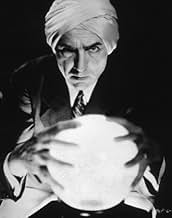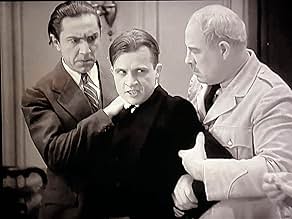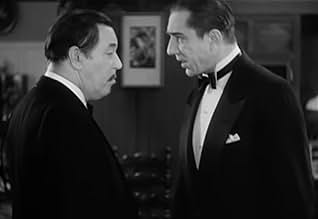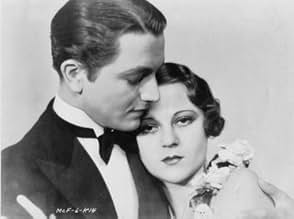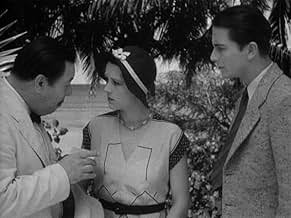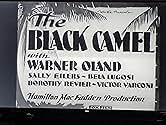CALIFICACIÓN DE IMDb
6.6/10
1.8 k
TU CALIFICACIÓN
El asesinato sin resolver de un actor de Hollywood varios años antes y una enigmática vidente son las claves que ayudan a Charlie a resolver la muerte a puñaladas de una bella actriz en Hono... Leer todoEl asesinato sin resolver de un actor de Hollywood varios años antes y una enigmática vidente son las claves que ayudan a Charlie a resolver la muerte a puñaladas de una bella actriz en Honolulu.El asesinato sin resolver de un actor de Hollywood varios años antes y una enigmática vidente son las claves que ayudan a Charlie a resolver la muerte a puñaladas de una bella actriz en Honolulu.
- Dirección
- Guionistas
- Elenco
Dwight Frye
- Jessop
- (sin créditos)
C. Henry Gordon
- Huntley Van Horn
- (sin créditos)
Robert Homans
- Chief of Police
- (sin créditos)
Hamilton MacFadden
- Val Martino
- (sin créditos)
Louise Mackintosh
- Housekeeper
- (sin créditos)
Opiniones destacadas
This is the earliest surviving Charlie Chan film to star Warner Oland as the detective (not counting 1929's BEHIND THAT CURTAIN, which only briefly featured Chan), an entertaining mystery nicely directed with stylish shooting and locations for such an early talkie. Chan is in Honolulu investigating the murder of a young movie actress and tries to untangle the relation between her death and a prior killing of another actor she used to know. Bela Lugosi, fresh after "Dracula" and riding its successes for a brief time in his career, is very good as a mystic involved in the mystery. A real treat of the picture comes whenever watching Lugosi and Oland interacting together. Dwight Frye, Bela's sidekick "Renfield" from "Dracula", also has a part as a butler. A very young Robert Young (of FATHER KNOWS BEST fame) is also on hand albeit in a rather insignificant part. This was the only time Chan was assisted by his bumbling sidekick Kashimo, and it's for the best, as this character is extremely irritating. *** out of ****
The quality of the film isn't the best, the acting is stilted and over the top, but 1931's "The Black Camel," the earliest extant Charlie Chan featuring Warner Oland, makes for fun viewing. Charlie is on his home court of Hawaii, where an actress, Shelah Fane (Dorothy Revier) is found murdered after consulting a psychic (Bela Lugosi) about whether or not she should marry someone she has fallen in love with.
This is only the first murder; another one follows. On investigation, Charlie discovers a connection to the case with a previous Hollywood murder, which went unsolved.
It's an absolute riot to see Bela Lugosi as a psychic named Tarneverro whose real name is Arthur Mayo. Better yet is Robert Young, who looks like he's about 16, as Jimmy Bradshaw. Then there's this nut job (who at one point actually ran onto a scene and scared me), Otto Yamaoka, who plays Kashimo. Kashimo is the forerunner of Lee Chan and Birmingham the chauffeur but he's crazier than a coot with his flapping arms and explosive voice.
We also get a chance to see Charlie at home with his large family, admonishing his son: "Why are you always last in your class? Can't you find some other place?" Son: "They were all taken." This particular entry into the series is steeped in cinematic history: it is the only surviving film out of five films starring Warner Oland that were based on the novels of Earl Derr Biggers; and it was shot in Honolulu in 1931. Back then location shoots were a rarity. Also, Earl Derr Biggers visited the set in Honolulu with a copy of his 1929 novel and gave it to Chang Apana, the real-life Charlie Chan.
Definitely worth seeing, and a neat mystery. There is a gaping hole in the plot; see if you can find it.
The title is based on the saying: "Death is a black camel that kneels unbidden at every gate."
This is only the first murder; another one follows. On investigation, Charlie discovers a connection to the case with a previous Hollywood murder, which went unsolved.
It's an absolute riot to see Bela Lugosi as a psychic named Tarneverro whose real name is Arthur Mayo. Better yet is Robert Young, who looks like he's about 16, as Jimmy Bradshaw. Then there's this nut job (who at one point actually ran onto a scene and scared me), Otto Yamaoka, who plays Kashimo. Kashimo is the forerunner of Lee Chan and Birmingham the chauffeur but he's crazier than a coot with his flapping arms and explosive voice.
We also get a chance to see Charlie at home with his large family, admonishing his son: "Why are you always last in your class? Can't you find some other place?" Son: "They were all taken." This particular entry into the series is steeped in cinematic history: it is the only surviving film out of five films starring Warner Oland that were based on the novels of Earl Derr Biggers; and it was shot in Honolulu in 1931. Back then location shoots were a rarity. Also, Earl Derr Biggers visited the set in Honolulu with a copy of his 1929 novel and gave it to Chang Apana, the real-life Charlie Chan.
Definitely worth seeing, and a neat mystery. There is a gaping hole in the plot; see if you can find it.
The title is based on the saying: "Death is a black camel that kneels unbidden at every gate."
I must forewarn, one and all, I love murder mysteries. I am also a huge fan of the Earl der Biggers character, Charlie Chan. They are rather formulaic with their always being a young lovebirds involved in each case. The handsome young man in this one...was Robert Young's first starring role. The cast included Bela Lugosi and Dwight Frye, apparently they had become a tagteam of sorts. Their movie Dracula had come out earlier that year. Bela played a famous mind reader that was in Hawaii on business. We meet Warner Oland, my personal favorite Charlie Chan, casing the mind reader, trying to disguise himself as a Chinese business man. Of course, Bela sees right through the charade and deduces that Charlie is really a policeman...Charlie warns Bela that they don't care for ripoff artists on the islands. Bela tells Charlie that they are both mystics...Chan investigates the past, while he investigates the future. The movie was full of plot twists and red herrings. The direction was crisp and the acting first rate. Though, in today's world of political correctness, the Asian stereotypes would be and are inappropriate...if one can overlook accepted bias' from eons ago...you can enjoy one of the first Charlie Chan's ever made. I believe Charlie Chan Carries On is the first episode of Charlie Chan, portrayed by Warner Oland...this is the second episode and one well worth your time to watch.
I'd seen this film before on a private-edition videotape and have now watched it again on the version in the Fox Charlie Chan, vol. 3 DVD boxed set. This is one of the greatest films in the Charlie Chan series with Warner Oland of the later films that exist only "Charlie Chan at the Opera" (ironically with another horror icon, Boris Karloff, in its cast) matches it thanks to Hamilton MacFadden's dark, atmospheric direction; a script that sticks closely to Earl Derr Biggers' source novel (except for omitting the long prologue on the ship that takes the principal characters to Hawai'i); superb art direction by Ben Carré and a marvelous cast, including Bela Lugosi playing an unusual range of emotions for him (the scene in which he confronts Dorothy Revier early on is especially impressive and not at all what we think of as Lugosi's usual acting style); a welcome reunion between him and his "Dracula" cast-mate Dwight Frye; Robert Young looking like he just graduated from high school as the suitor of Shelah Fane's personal assistant (Sally Eilers); and excellent cinematography by Joseph August and Daniel Clark, more prestigious cameramen than usually worked on the Chan films. It's nice to see Chan's family used the way they were in the Biggers novels (Biggers frequently wrote scenes in which the Chans sit down to dinner and Charlie brings them and us up to speed on the latest developments in his case), and another welcome touch in this film is the artful use of "source" Hawai'ian music in lieu of orchestral underscoring. While it's likely the Hawai'ian location trip only involved a second unit shooting backgrounds (there are some pretty obvious process shots here) and the Hawai'ian music could have just as easily been recorded in L.A. (where there was a large community of Hawai'ian musicians at the time), nonetheless "The Black Camel" is vividly atmospheric. Why Hamilton MacFadden didn't have much of a directorial career after the mid-1930's and none at all after 1945 is a mystery; judging by this film he would have been a "natural" for the noir genre.
This was the second Chan film to star Warner Oland in the role. It is also the earliest film of the series proper to survive. (1929's Fox film "Behind That Curtain" is still extant, but has Chan in a very minor part and isn't a true Chan film). It was actually filmed in Honolulu and captures that city as it was in the early 30's. Two "Dracula" alumni appear: the great Bela Lugosi, and Dwight Frye who played Renfield in the horror classic and is a butler here. Based on the Earl Derr Bigger's novel, this was later remade as "Charlie Chan in Rio" with Sidney Toler in the lead. This one is better. Sadly, it appears available only on the collectors' film market. It is worth the search and the viewing. Beware of copies with scenes missing!
¿Sabías que…?
- TriviaOf the five Warner Oland Charlie Chan films based on the original Earl Derr Biggers novels, only this one still survives. The other four are believed to have been lost in one of two fires, one in the 1930s and the other in the 1960s.
- ErroresThe knife thrown at Chan when he discovers the scratches under the table couldn't possibly have come from the direction it is thrown from.
- Citas
Wilkie Ballou: Your theory's full of holes. It won't hold water!
Charlie Chan: Sponge is full of holes. Sponge holds water.
- ConexionesEdited into Who Dunit Theater: Charlie Chan Black Camel (2021)
Selecciones populares
Inicia sesión para calificar y agrega a la lista de videos para obtener recomendaciones personalizadas
- How long is The Black Camel?Con tecnología de Alexa
Detalles
- Tiempo de ejecución1 hora 11 minutos
- Color
- Relación de aspecto
- 1.20 : 1
Contribuir a esta página
Sugiere una edición o agrega el contenido que falta

Principales brechas de datos
By what name was The Black Camel (1931) officially released in India in English?
Responda
